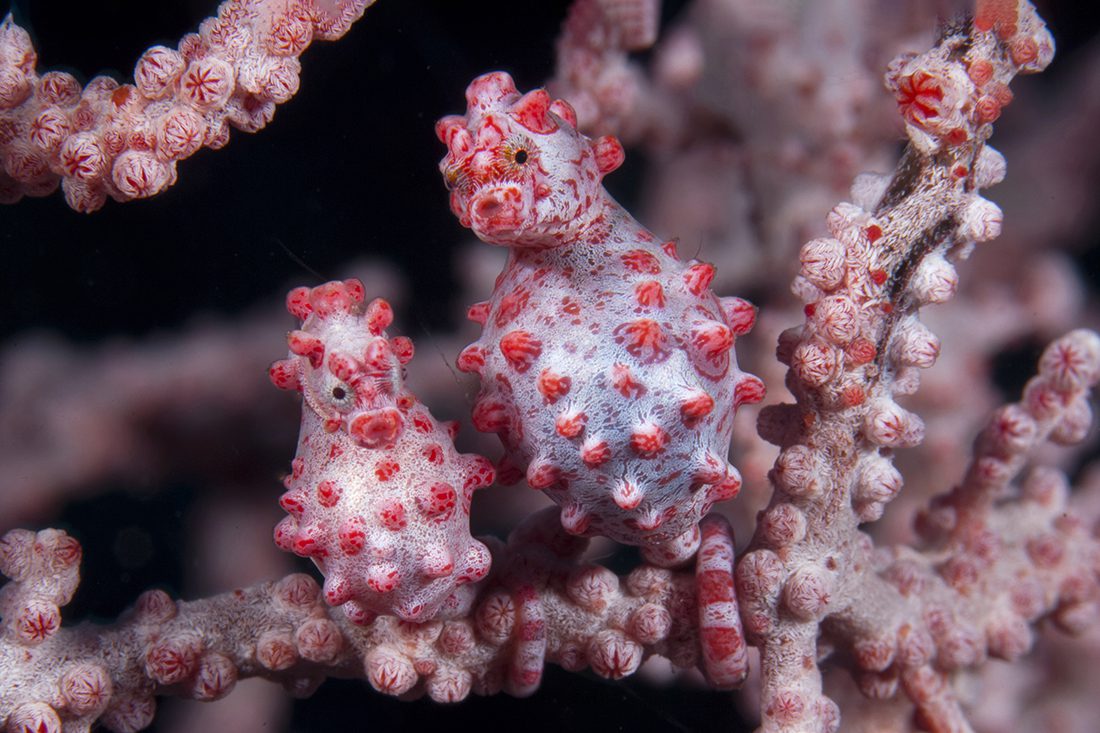A Peek into the Small World of the Pygmy Seahorses at Wakatobi
Though you might not guess it based on name or appearance, seahorses are actually fish. And pygmy seahorses are some of the tiniest fishes in the sea. The largest specimens could lay across the top of a nickel with room to spare, and the smallest down to less than breadth of a child’s fingernail. In all, this is a creature that typically measures less than 2 centimetres (0.79 in) in height.
Their tiny size and near-perfect camouflage kept pygmies hidden from humans until recently. Now, they have become superstars of the tropical Pacific and Indian Ocean reefs, and a favorite subject of a growing number of photographers who devote many hours to the search for these tiny, elusive creatures.
A Chance Discovery
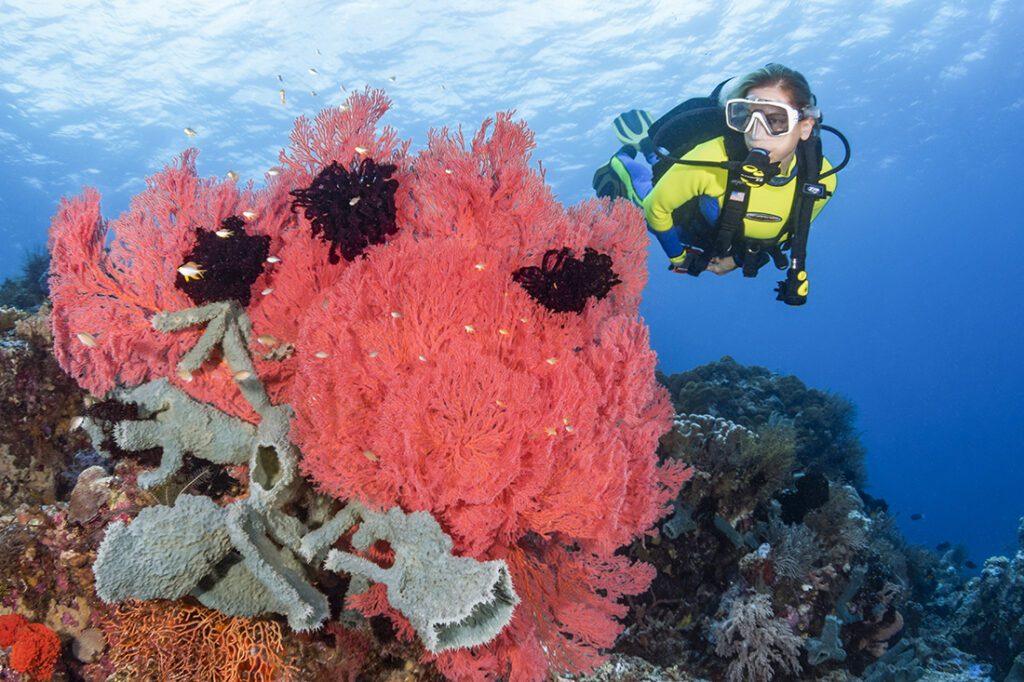
The first pygmy seahorse wasn't discovered until 1969 when a keen-eyed researcher named George Bargibant was preparing a large Muricella sea fan for the Museum of New Caledonia. He happened to notice a pair of tiny seahorses attached to a branch of the fan. Their color and texture perfectly matched their coral home, making them all but invisible at first glance. The following year, Hippocampus bargibanti was named in his honor.
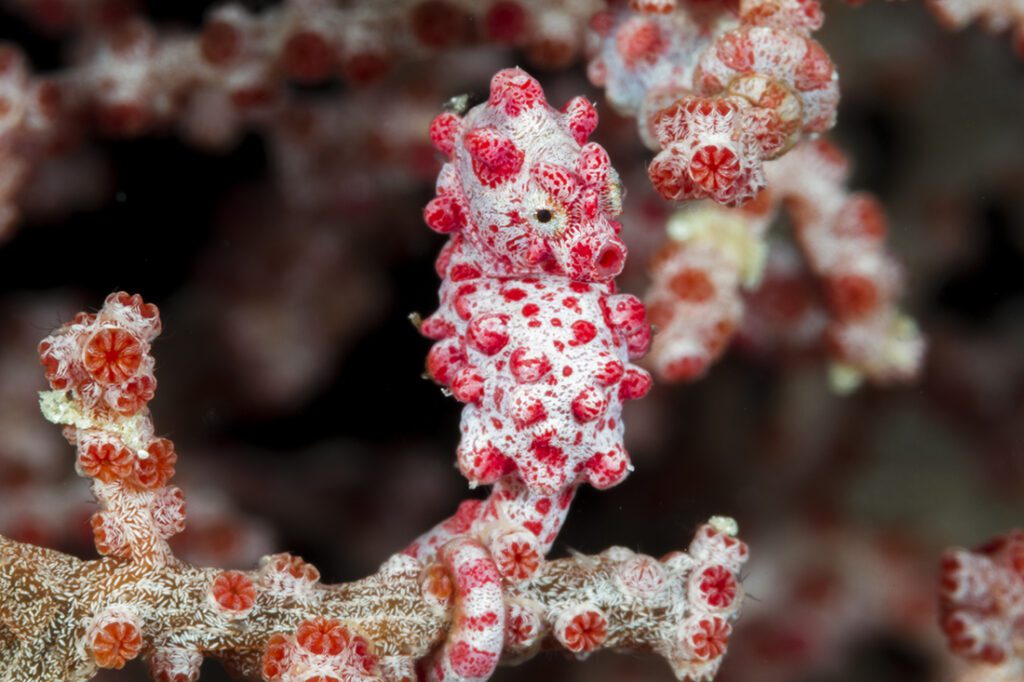
After this initial discovery, pygmy seahorses remained relatively unknown for the next twenty-odd years. But as more and more divers began making their way into the waters of the tropical western Pacific on through Indonesia, Philippines and Malaysia in the early 1990’s, a flurry of new discoveries were being made.
In 1997, a second species of pygmy was discovered on a WW II shipwreck named the Mawali in Lembeh Strait, Indonesia. Located on a small orange sea fan on the stern of the wreck, this pygmy looked different from that of a H. bargibanti and was more orange in color than what was associated with that species. Among the physical traits of this pygmy seahorse was that it was smaller and thinner, with a slightly longer snout than a bargibanti. Denise Tackett, the photographer who first found it, presented some images to seahorse experts. At first, they said it was probably just a different color variation of H. bargibanti, until DNA analysis confirmed the orange pygmy was indeed a new species.
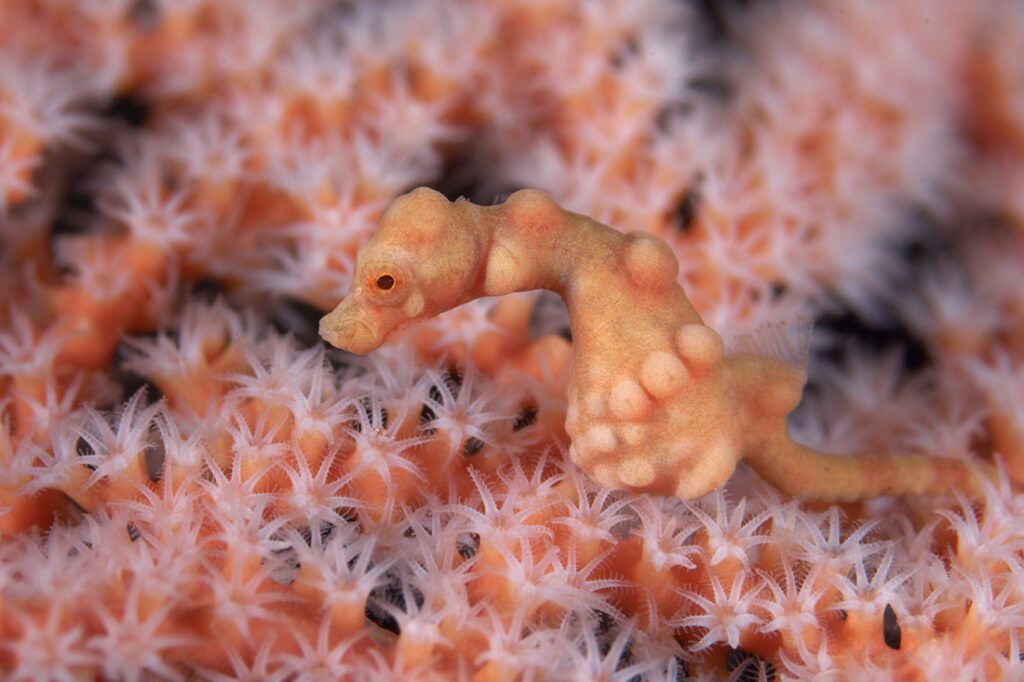
In 1999, Dr. Sara Lourie and Dr. Jack Randall authored a scientific paper giving the seahorse the Genus Species name Hippocampus denise in honor of the person who first discovered it. By 2003 the world had its second pygmy seahorse, more commonly known as Denise’s pygmy, the ‘Littlest Seahorse’.
On day two of their second visit to Wakatobi in 2003, Denise Tackett and her husband Larry took a dive on the Wakatobi House Reef and found a mated pair of Denise’s pygmies. In the days following, they captured video footage of the pair and ultimately the pregnant male (yes, male) giving birth to 13 baby pygmies from its stomach pouch. Larry described the experience as “without a doubt the most amazing moment in my 6500+ dives, and still is to this day.”
You can view the video here > https://youtu.be/VtyZ0jfurxg
Through the efforts and diligence of divers searching the reefs for these tiny creatures, a flurry of new species began to emerge. From 2003 to 2008 the following species were identified and named: Coleman's pygmy seahorse (Hippocampus colemani); Pontoh's pygmy seahorse (Hippocampus pontohi); Severn's pygmy seahorse (Hippocampus severnsi); Satomi's pygmy seahorse (Hippocampus satomiae); Walea soft coral pygmy seahorse (Hippocampus waleananus). Proving new discoveries are still being made, in April 2018, a Japanese pygmy seahorse (Hippocampus japapigu) was identified, followed by the Sodwana pygmy seahorse (Hippocampus nalu) in 2020. So, the opportunity for the average diver to make a unique scientific discovery is still very possible.
They Don’t Look Like Fish
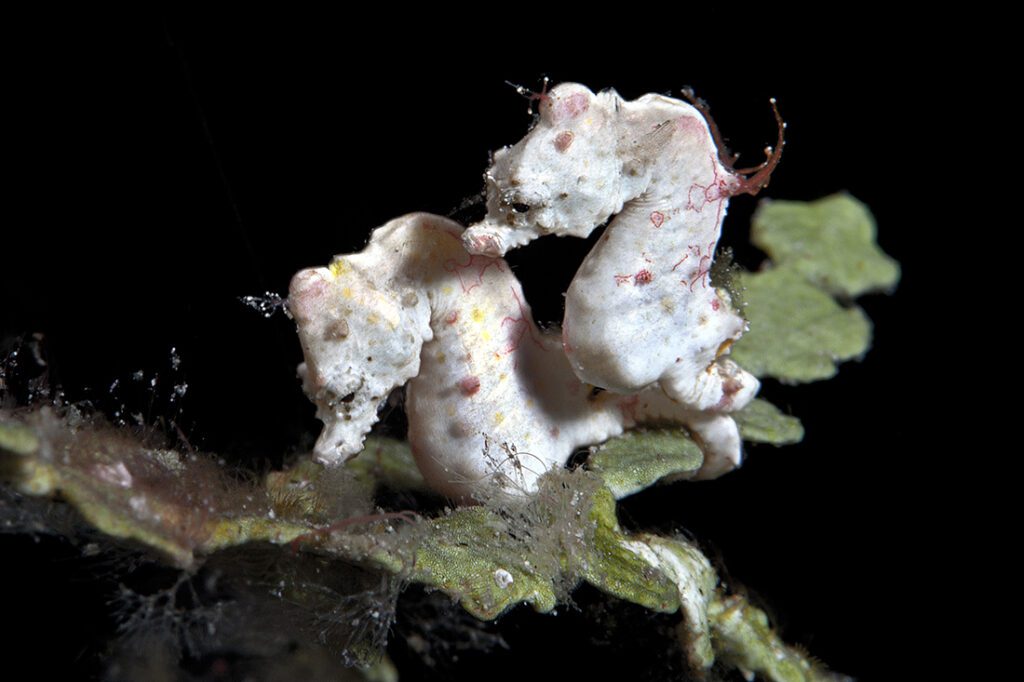
Somewhere in the evolutionary process, seahorses lost many of the features that identify them as fish. Their fins are tiny, their tails have become more monkey-like than fishy, and their mouths have morphed into puckered snouts. As is usually the case in nature, these adaptions serve specific purposes.
Much like a monkey clinging to a branch, pygmy seahorses use their comparatively large and muscular tails to cling to a stationary object such as a coral branch and let the currents bring meals their way. It's a lot less work than swimming. The big tails are also an asset when a pygmy is threatened. At the first sign of a threat, they may flex their tail muscles in a recoil action that tucks their head close to the body and away from danger.
The pygmy’s big snout is also a labor-saving adaptation. Seahorses suck up their meals, and their elongated snouts give them extra leverage when capturing prey. They wait until a promising morsel gets within range, then give a quick flick of the head that swings the snout out in a fast arch that's coupled with a vacuum cleaner-like inhalation. This feeding process requires a lot less effort than lunging or pursuing, and it's an ideal solution for going after the extra-tiny types of prey that pygmies prefer.
Seeing the littlest Horse of the Sea
Locating a pygmy is usually considered a rare treat — unless you are diving in the waters of Wakatobi. “Wakatobi is one of the best places in the world to observe pygmy seahorses,” says Dr. Richard Smith. While pursuing his doctoral work on pygmy seahorses, Smith spent hundreds of hours on the Wakatobi dive site known as the House Reef. “This site is exceptional for both the number of seahorse species and their abundance,” he says.
The long hours watching pygmies on the House Reef paid off, and Smith became the first person to complete a Ph.D. on the biology of pygmy seahorses. He's shared some of his findings and images on his website www.OceanRealmImages.com.
To this day, Wakatobi's House Reef and many surrounding reefs remain favorite sites to hunt for pygmies, and the resort's dive guides know just where to look for these tiny treasures.
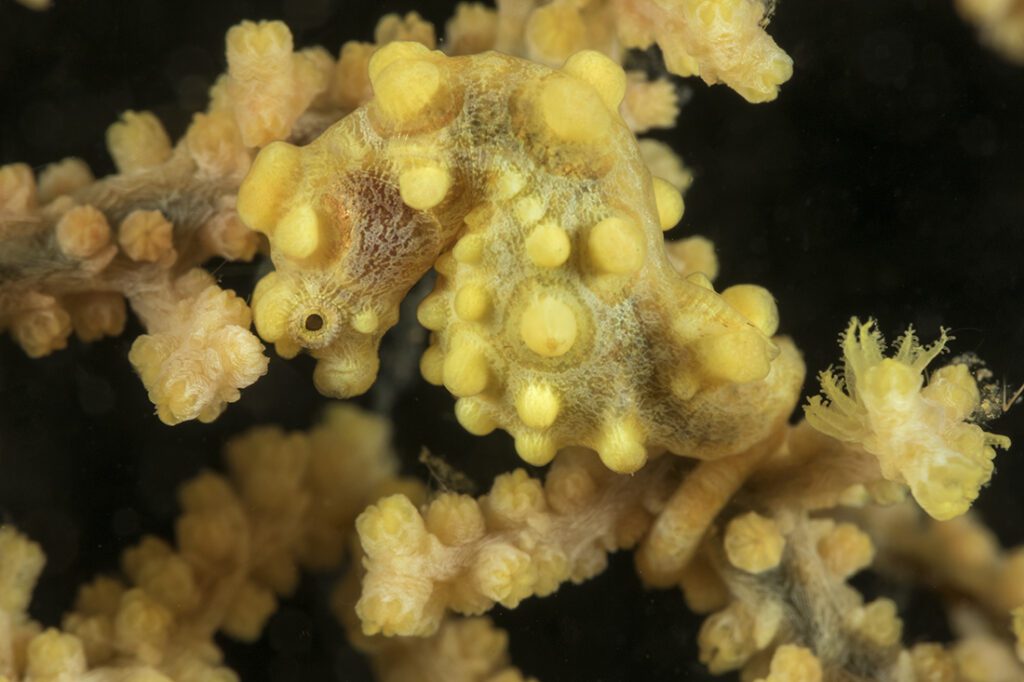
The only place you'll find the Bargibant’s seahorse is on a Muricella sea fan growing along the reef's outer slope. This species spends its entire life on a single fan. Once a youngster settles into its home, it develops a coloration and shape that perfectly matches the branches of its host, with hues that can range from pink, yellow and lavender to brown. At around 2.5 cm in length, Bargibant’s are actually the heavyweights of the pygmy seahorse world.
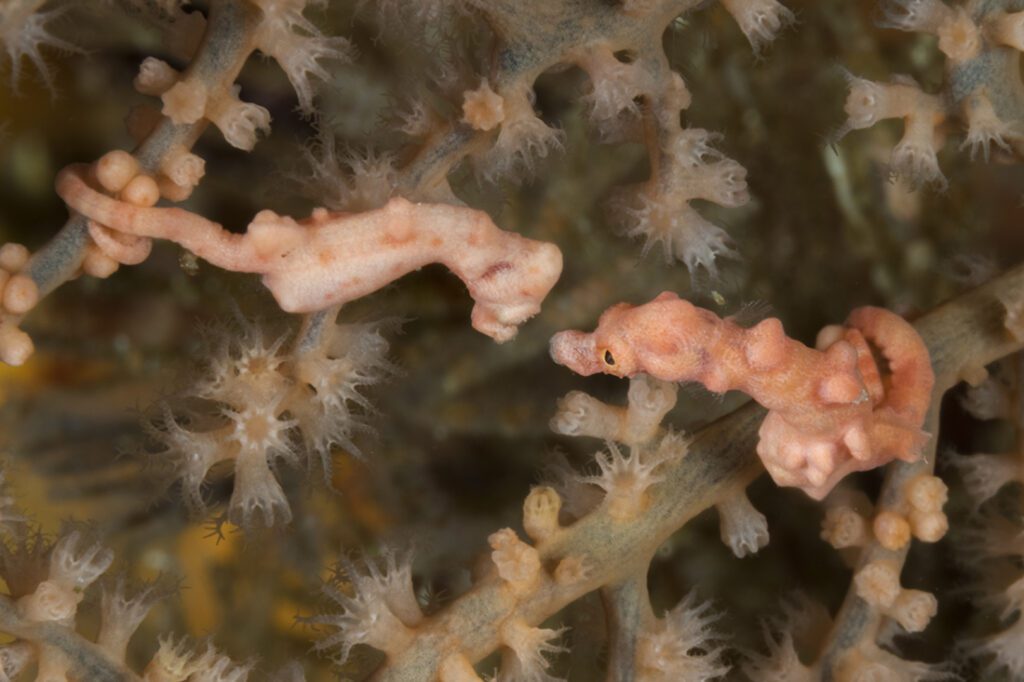
The Denise’s pygmy also prefers sea fans but can be found on about ten different varieties of these soft corals. Due to their more varied choices of habitat, Denise’s pygmies show more and different color patterns than their Bargibant’s cousin.
“The shallow coral heads and seagrass beds just off the beach at Wakatobi Resort ARE considered one of the best places in the world to see Pontoh’s pygmies.” ~Richard Smith
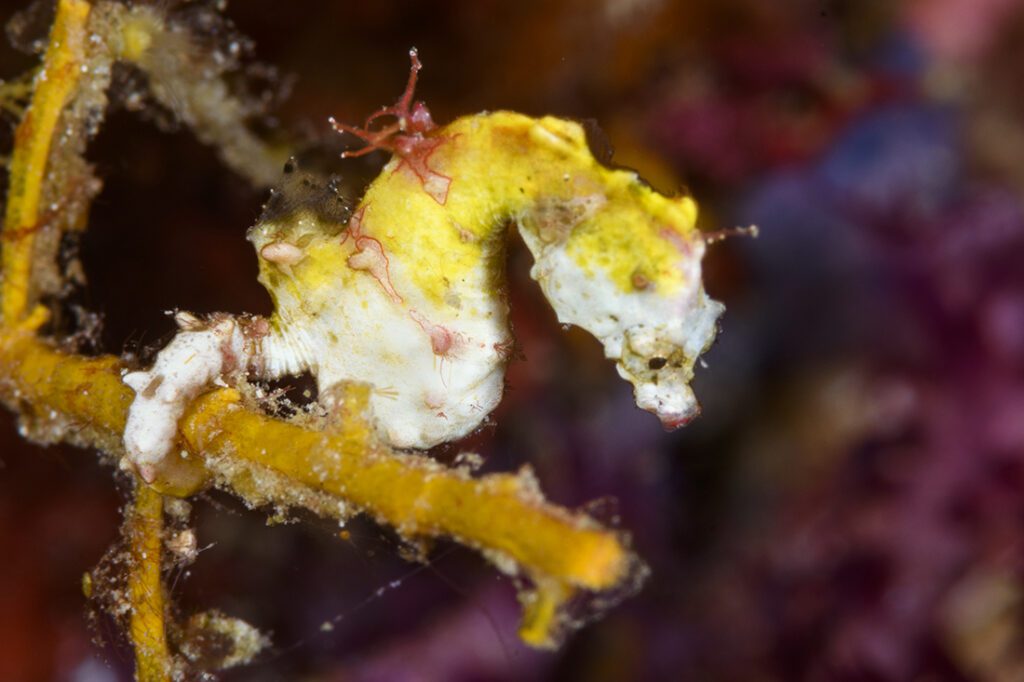
Unlike its gorgonian-dwelling cousins, the Pontoh’s pygmy seahorse prefers shallower areas of the reef. First discovered in 2008 by Indonesian dive guide Hence Pontoh, this species is usually found foraging in seagrass beds. This preference has earned it the nickname of “weedy pygmy.” The area of shallow coral heads and seagrass beds just off the beach at Wakatobi Resort is considered one of the best places in the world to see Pontoh’s pygmies.
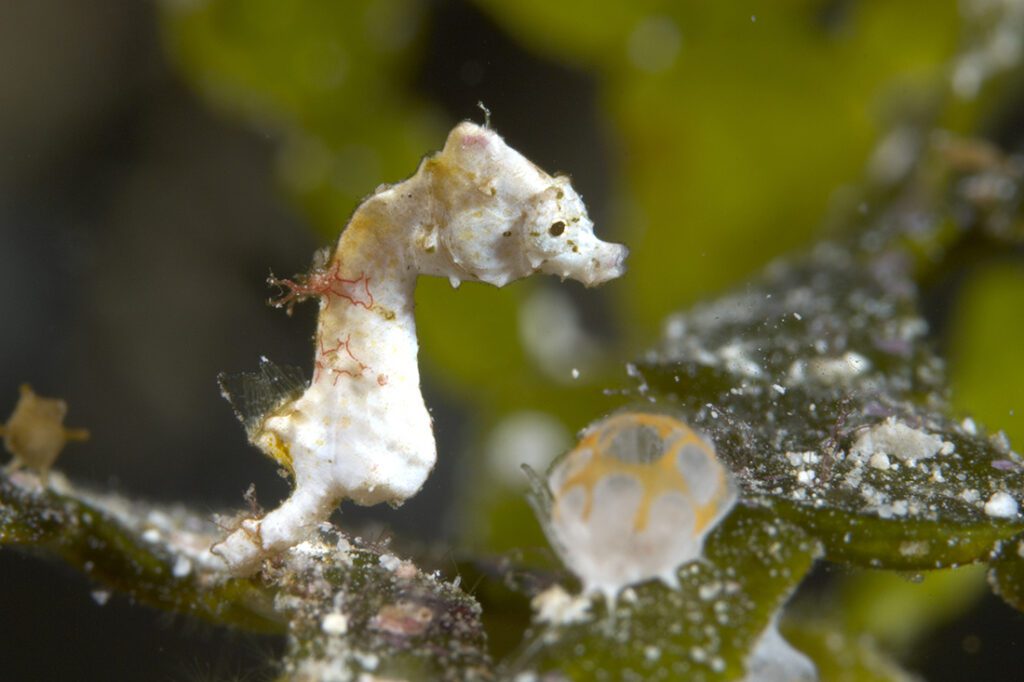
Nearly identical in appearance as well as size to the Pontoh's pygmy seahorse (Hippocampus pontohi), the Coleman's pygmy seahorse (Hippocampus colemani) were first discovered off of the coast of Lord Howe Island, Australia by famed underwater naturalist Neville Coleman. Since its initial discovery in 2008, Coleman’s have been reported from Milne Bay and the Ryukyu Islands in Papua New Guinea on up into South Sulawesi, Indonesia. Like Pontoh's, Coleman’s have a preference for Halimeda and sea grass beds at depths around 5 metres.
Pygmies are thought to be monogamous and mate for life. Again, this may be related to efficiency, as it takes a lot of extra energy to go hunting for a new partner every time the urge arises. Additionally, species such as Bargibant’s that spend their entire life on a single sea fan have limited options in the spousal department, so staying faithful is probably a good idea.
Role Reversals
Male cardinalfishes and jawfishes take on added parental duties by incubating fertilized eggs in their mouths. But that's nothing compared to seahorse dads, who actually performs full role the mother by carrying the eggs in a pouch located on his underside.
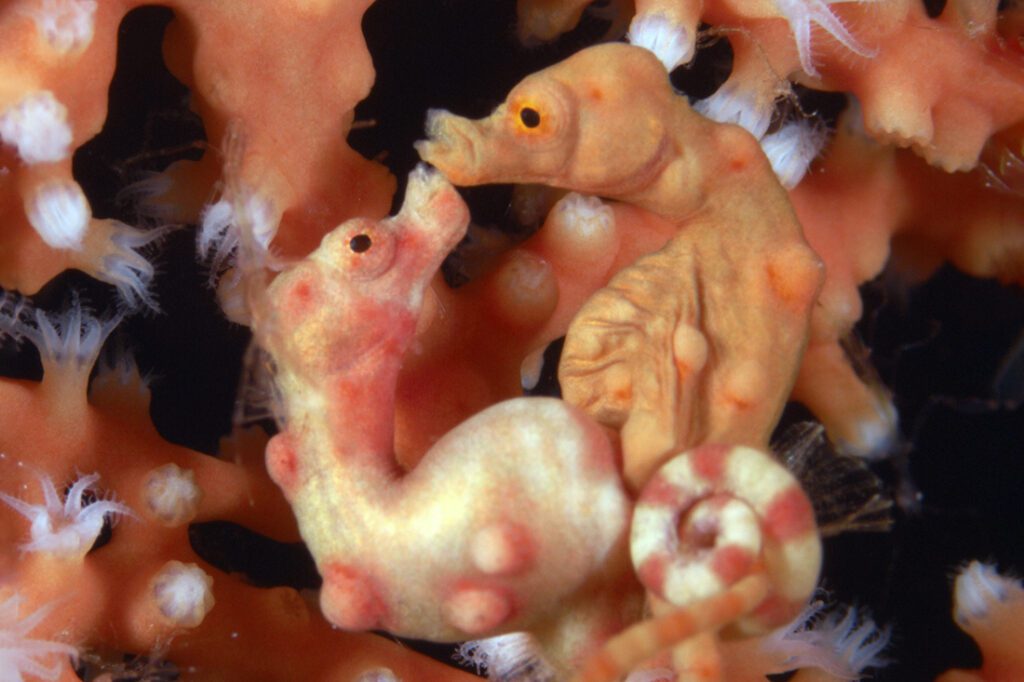
This process begins when the female inserts eggs into the male's brood pouch, which he then fertilizes, nurtures with nutrients and oxygen for a period of about two weeks; he then gives live birth to tiny children that measure a minuscule 2 mm in length.
One theory that explains the male pregnancy strategy is that it allows for an acceleration of the mating cycle. By turning nurturing duties over to the father, a female pygmy seahorse can devote more of her energy to starting on the next batch of eggs. As a result, some species can complete a reproductive cycle every couple of weeks.
Pygmy seahorses are just one of the thousands of species of unique marine life found on the reefs of Wakatobi. Thanks to decades of protection, these pristine habitats continue to provide divers with near-endless possibilities for discovery. It's one more reason why we call a visit to Wakatobi “An Experience Like No Other.”
More about Richard Smith’s research at Wakatobi.
Blog about Meadows of the Sea here.
The next time you visit Wakatobi, make sure to ask the guides about pygmy seahorses and where you might be able to see one. Bring an underwater magnifier for a better view.
Time for a visit? Contact the team at office@wakatobi.com or Enquire here
